In Highland Perthshire, Sir John Kemp-Welch and Ronnie Kippen have worked tirelessly to conserve Scotland’s iconic heather moorland and the native wildlife that depends on it
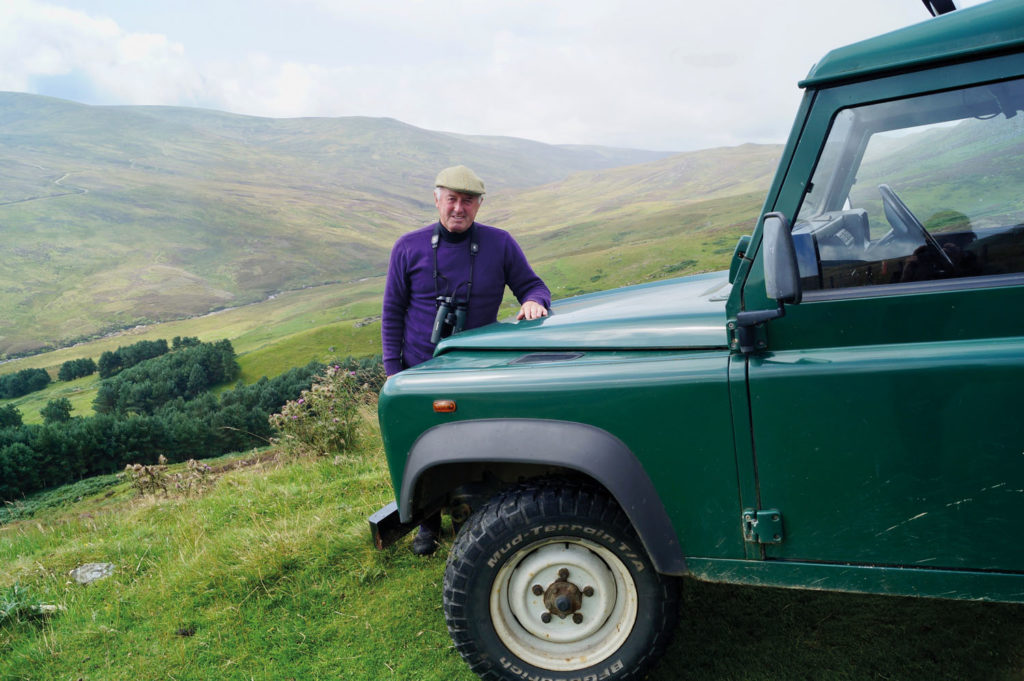
The picturesque 5,000-acre Garrows Estate near LochTay in the Perthshire Highlands is a magnet for bird photographers. Ronnie Kippen, who retired as headkeeper in 2018 after almost 40 years, remains employed by the estate. He said: “A photographer recently stopped me to say he’d just seen a golden eagle sitting on the cairn – it’s fantastic! I told him to tell his friends that he was in the heart of driven grouse country and was able to photograph an eagle!”
Estate facts
- Location: Perthshire
- Type of farming: Sheep
- Acreage: 5,000
- Funding grants: SRDP Moorland Management Scheme
But there wasn’t always the abundance of wildlife that thrives on Garrows today. Gamebooks dating back to 1887 show that historically there were good numbers of grouse. When the current owner Sir John Kemp-Welch’s family bought it in 1929, the population was healthy, as it was in the 1960s and 1970s. However, a decline began in the early 1990s and, by 2009, numbers had dropped dangerously low, to less than 10% of previous figures.
Determined to reverse the decline, the estate took several radical measures to try to improve the habitat, including dramatically reducing the number of sheep. Like most Scottish farms in the post-war period, the push for greater agricultural output had upped the size of the flock and allowed them to inhabit every area of the estate, which resulted in overgrazing, particularly of the moorland. Sir John asked GWCT advisor Adam Smith to suggest a plan for habitat improvement. He said: “Over many years, we have received excellent advice from Peter Hudson, Dick Potts and Adam Smith of the GWCT, and none of the actions to improve habitats would have happened without their guidance.”
As well as recommending a reduction in sheep numbers, Adam advocated taking the flock off the hill completely in the winter to allow the heather to recover, and returning them to the moor in spring. The plan was carried out to the letter and the results were spectacular. Native plants that hadn’t been seen for decades began to reappear, along with insects and birdlife.
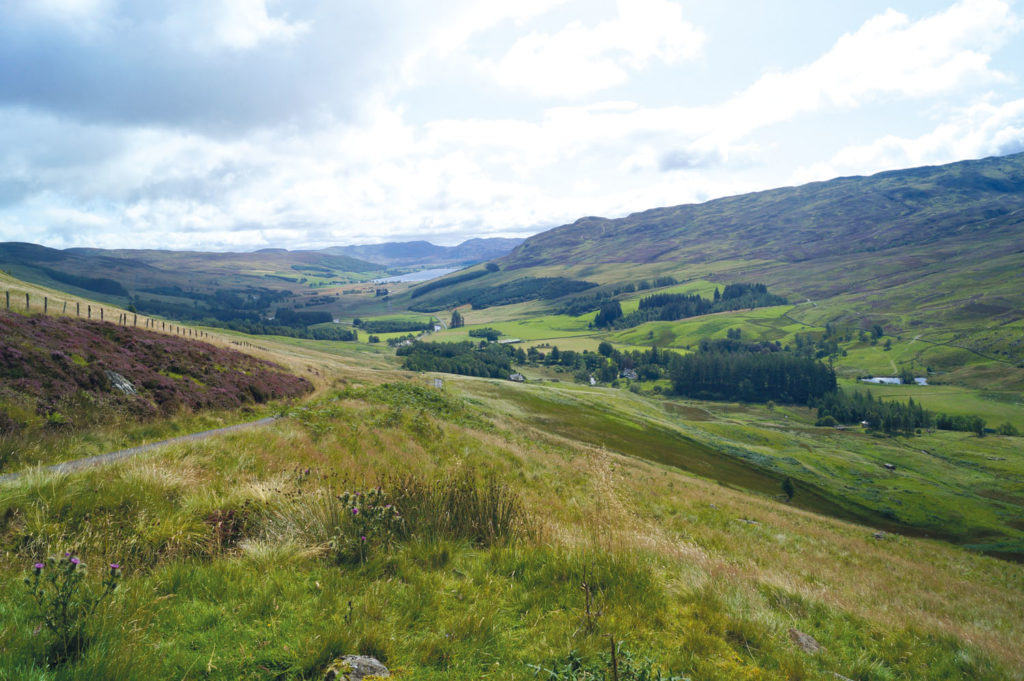
Although heather cover improved, the grouse did not show the same recovery as other wildlife. The number of tick had greatly increased in the region and the impact on grouse, particularly the chicks, became a concern. As it was likely that sheep were one of the main carriers, Adam Smith recommended greater discipline in treating the flock with acaricide every six to eight weeks, and they were also treated for the tick-borne disease louping-ill.
Sir John said: “Our shepherd began to notice symptoms in some of the lambs and at that point we had sheep and grouse tested for the louping-ill virus. The tests proved 84% positive and the vet said it was the worst case he’d seen. After better treatment, there was a great improvement in the flock’s general condition.”
By much reducing the disease in the sheep, the flock became part of the solution to the tick problem. Sir John said: “Currently good sheep management is about the only thing being done to counter the countrywide rise in tick numbers. This is a real concern, particularly in light of the increasing cases of Lyme disease, which is transmitted by the parasites and is a very unpleasant illness for humans.” In spite of successfully tackling the problem in the sheep, after several years, the grouse had still not recovered and Ronnie and Sir John began to suspect that a large increase in the number of deer, which also carry tick, might be part of the reason.
Deer numbers grew rapidly in Scotland after the war, likely due to warmer winters and the expansion of commercial woodland. Sir John said: “During the war, virtually all the deer in the area were shot for food, and when I started stalking here in the 1950s it was quite rare to see a stag, but by the 1980s there had been a huge explosion in numbers.” Sir John and Ronnie had always wanted to achieve a diversity of wildlife on the moor with a stable grouse population, a healthy herd of deer, plenty of mountain hares and a well-managed sheep flock, and in the 1970s this was broadly achieved.
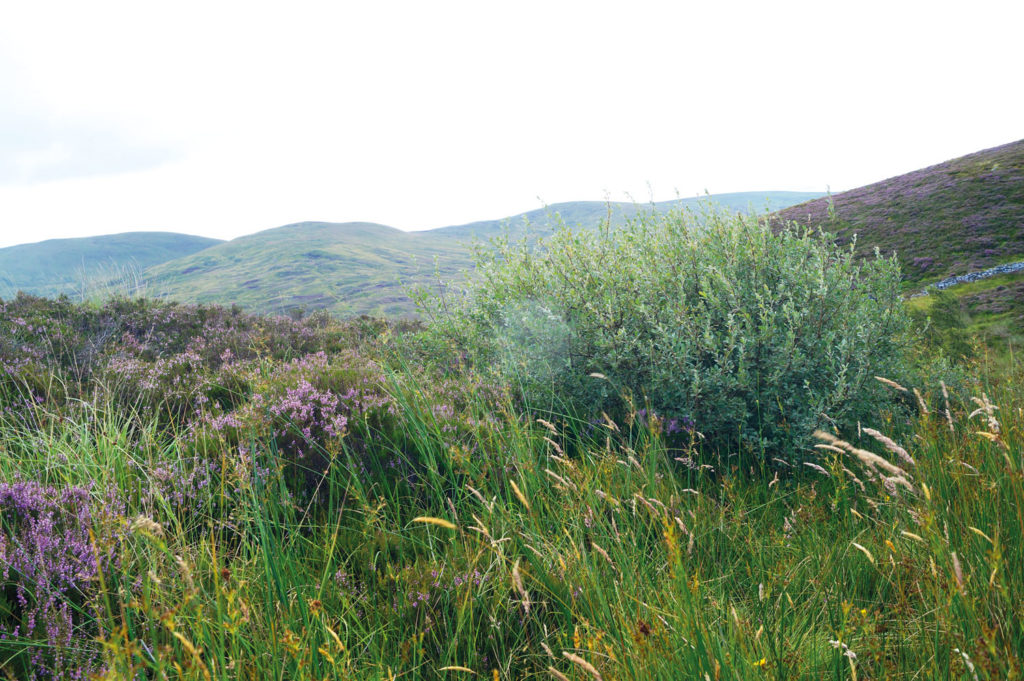
In later years, however, it became increasingly apparent that tick were becoming more prevalent due to high deer numbers. Therefore, the estate looked at the possibility of turning the deer into tick mops as opposed to carriers by treating them with acaricide. Ronnie researched this technique, which is used successfully in Africa and America. He said: “Unfortunately, our efforts were thwarted by the authorities, who refused to give permission for a trial. If deer were seen as part of the solution to the tick problem there would be less likelihood of them being eradicated, as has happened in some parts of Scotland. In our efforts we went right to the top of the then Deer Commission to try to persuade them to take this approach, but to no avail.”
By 2009, the grouse had reached their lowest level since 1887 and deer numbers remained high. Ronnie said: “I shot a July stag in one of the corries and I stopped counting ticks after 300. They were just like chain mail on him. At that point I thought we are not going to beat this with the sheep treatment alone; we will have to do something about the deer.” Three neighbours had already taken the decision to exclude deer and, in 2010, having exhausted all alternatives, it was decided to follow suit. Sir John said: “When our grouse numbers hit an all-time low in 2009, we felt that action had to be taken, which led to the very difficult decision to fence out the deer.”
After three years, grouse numbers began to recover as they have done on the three nearby moors, and this recovery has continued strongly since. There have also been benefits to waders and other wildlife. Ronnie said: “Previously I would see a line of curlew chicks and the one at the end would start to stumble, and when I looked closer he would have 10-15 tick round each eye. Well, that chick was as good as dead!”
Excluding the deer and changing the sheep management has had the effect of further reducing grazing pressure on the moorland vegetation, allowing plants to return. Ronnie said: “When I arrived here in 1980 the west side of the corries had been grazed very hard; now they have beautiful ridges of heather and blaeberry, and we have grouse where we did not previously have them. The GWCT’s Peter Hudson explained the importance of cotton grass in nourishing the hen grouse in preparation for the breeding season. In the past, having deer and sheep on the hill in winter meant there was virtually no cotton grass, whereas now if you lie in the corries it is so prolific, its white tips look like driven snow.”
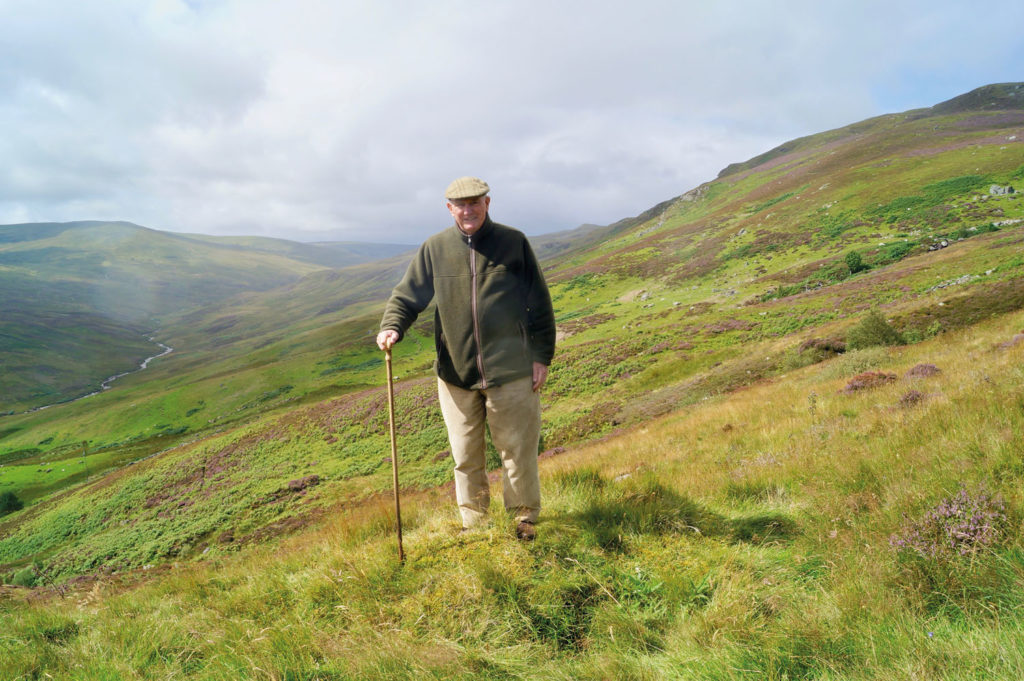
Two further important elements of grouse moor management have helped ensure both plant and bird species recovery. The first is heather burning, which involves lighting small, tightly controlled fires in the autumn, when possible, and spring. It rejuvenates rank heather, reduces the risk of wildfire and creates a mosaic of different heights of vegetation with taller heather to provide cover from predators and young growth as a nearby food source. The second is predation management, which increases the productivity of grouse, waders and other birds by protecting their eggs and young. As well as foxes, stoats and weasels, ground-nesting birds like curlew are highly vulnerable to avian predators including birds of prey and corvids. In the glen as a whole, one of the greatest threats comes from the growing population of jackdaws, which rob the nests of eggs in the breeding season. For this reason, they need to be controlled in the spring to give the waders a chance.
Another major predator of curlew and other waders are ravens, whose numbers have also increased in recent years. As part of a conservation project supported by Scottish Natural Heritage (SNH), in 2018 the local community was encouraged to apply for a licence to control a limited number of ravens to help the waders in the Strathbraan area. They asked local grouse keepers to carry out the control, which was targeted at the large flocks of juveniles, which congregate in the spring and can quickly strip a hill or field of eggs or chicks. This programme was carried out and the positive impact on waders and curlew in particular was instant. Ronnie explained: “Previously we used to see curlews with one or two chicks and thought that was the norm, but in the first year of the raven licence we went from averaging 1.5 chicks per pair to over three.” In spite of this success, after a campaign of intimidation, SNH asked the local community to withdraw its licence application and it is still waiting for guidance for the future from the licensing authority.
Conservation efforts on the moorland go hand-in-hand with the huge amount of work done to improve habitat on the lower ‘in-bye’ land at Garrows. Large areas of bracken, which harbours tick in the dead litter underneath, were almost completely cleared over a 35-year period. In addition, there was an investment in fencing. This made it possible to keep the sheep out of water courses, woodland and meadows in spring and summer allowing red-listed waders to nest on the grass undisturbed. Ronnie said: “When we fenced and changed the grazing, the difference in bird numbers was night and day. Having had almost none, we are now a nationally important area for curlews, oystercatchers and peewits.”
Conservation in numbers
- 3 average number of curlew chicks fledged
- 8 new black grouse leks
- 1,000 acres of bracken cleared
- 14 miles of fencing installed
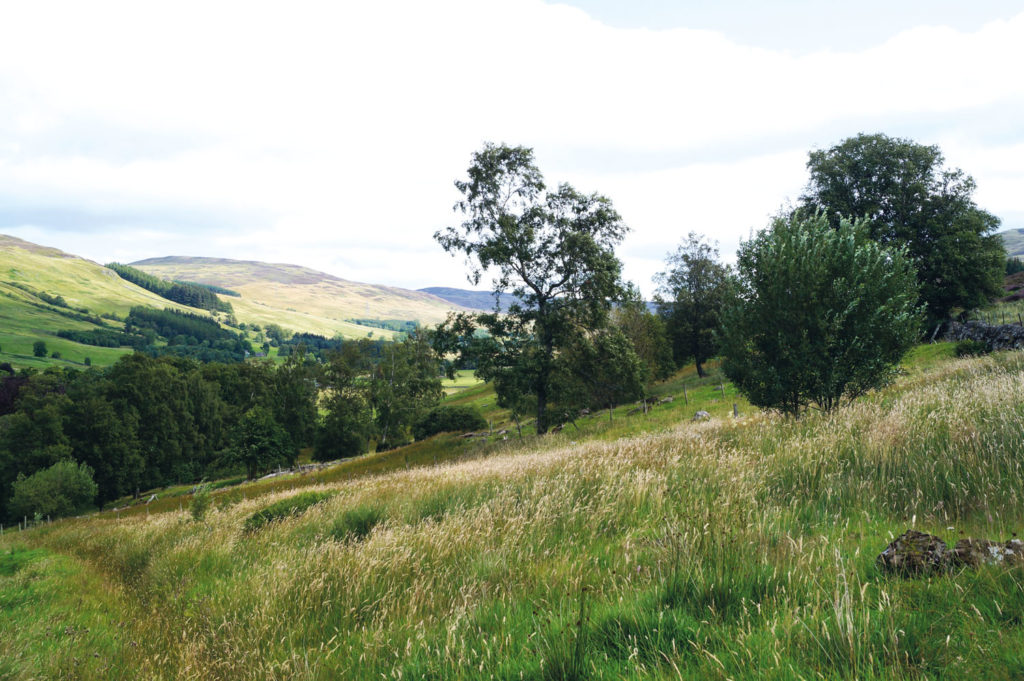
Black grouse, which have all but disappeared from southern Scotland after the abandonment of grouse moors, have also gained from such changes on the lower ground. 25 years ago they had nearly vanished from Garrows, but after habitat measures recommended by the GWCT were put in place, there is now a healthy population. The fact that many of the nearby estates are also conservation minded has created the landscape-scale habitat required by black grouse and many other endangered species. Sir John said: “Lots of our neighbours and near neighbours have done and are doing valuable work for wildlife, from which we all benefit. Wild pheasants are another bird to benefit, with a big rise from low numbers.”
Sir John and Ronnie are instinctive conservationists and thanks to many years of dedication, investment and hard work, Garrows exemplifies the strong recovery of habitats, wildlife and grouse that has occurred on well-managed moors in recent years. It is also an excellent example of how driven grouse shooting drives the enhancement of Scotland’s unique heather moorland and its biodiversity. Ronnie said: “It is grouse moor management, which is protecting this remaining historic landscape from over-grazing or forestry. Heather moorland is what the tourists come to Scotland to see. Abandoning it or covering it in trees would be like destroying the Taj Mahal.”
This case study is taken from our book Moorland Conservationists, available here for just £3.99.
